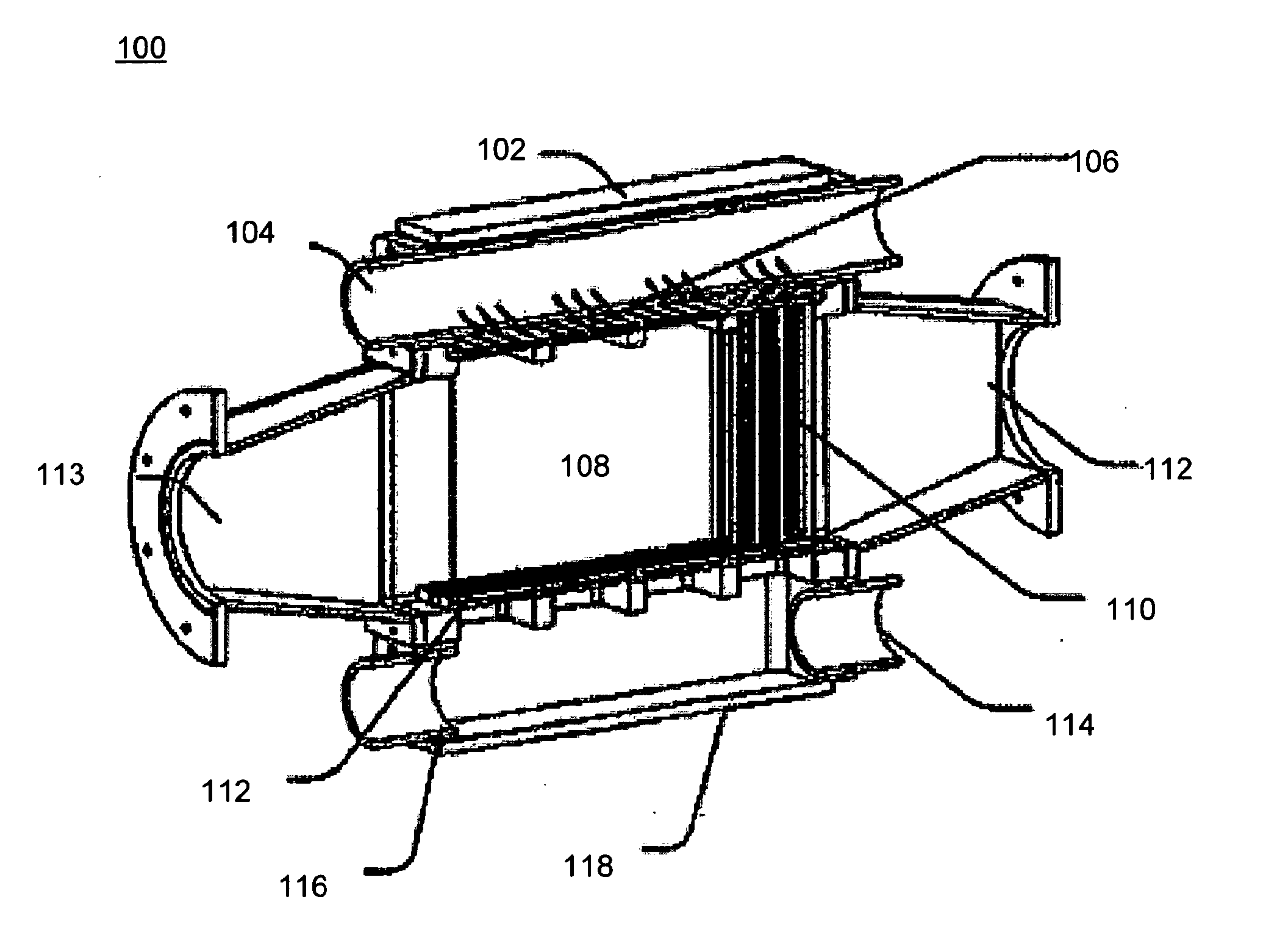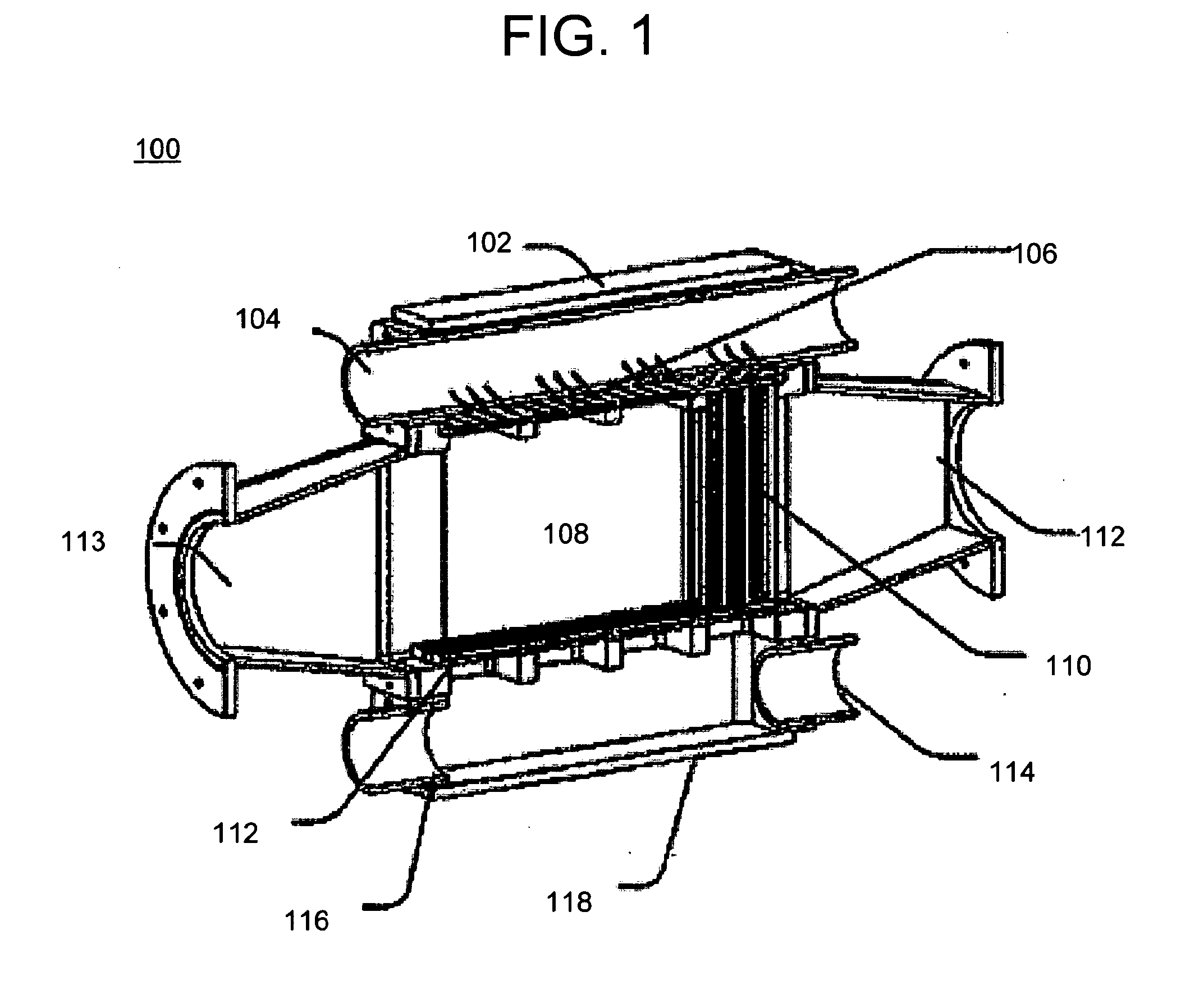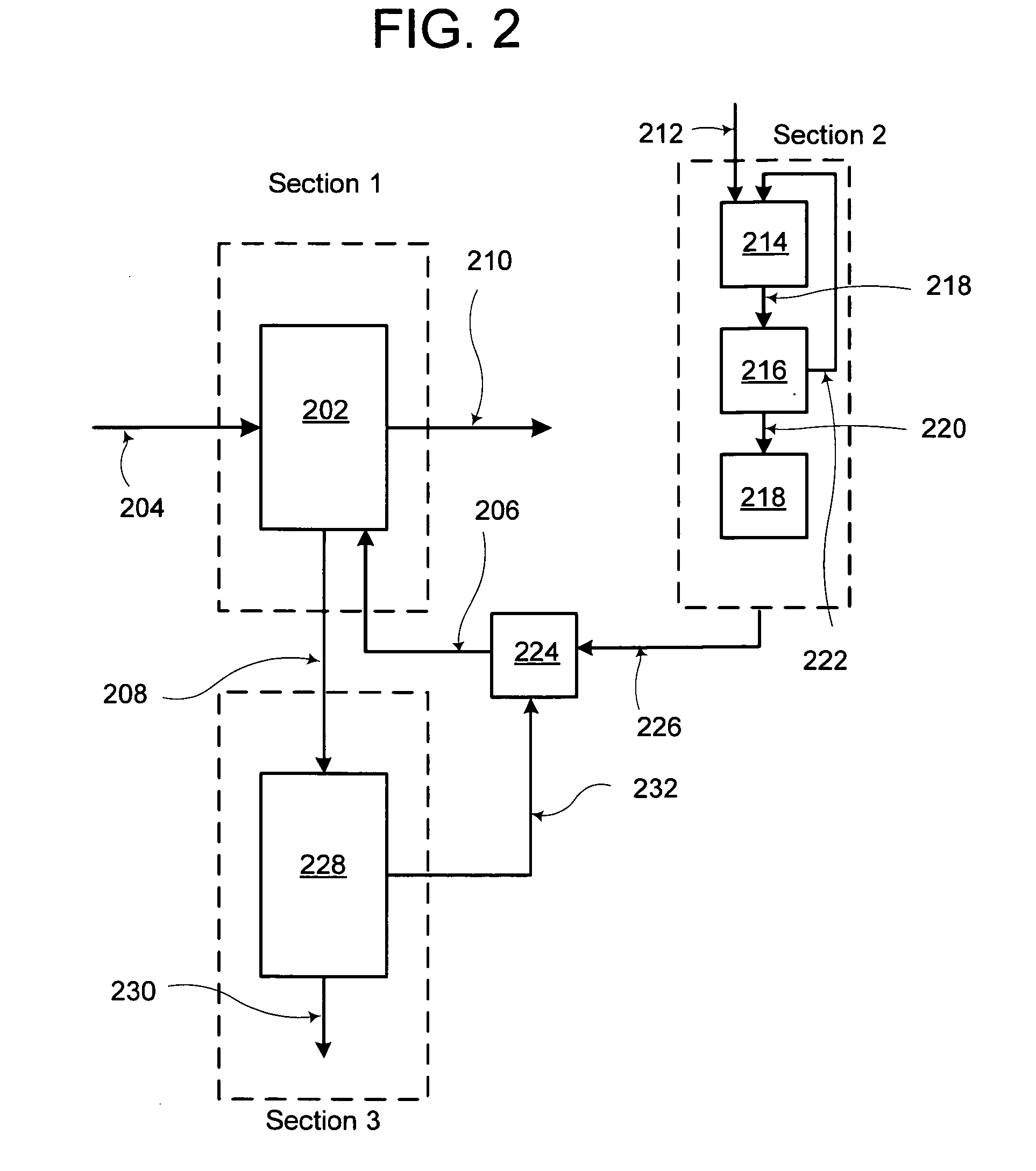Indirect and direct method of sequestering contaminates
a contaminate sequestration and contaminate technology, applied in the direction of separation process, emission prevention, lighting and heating apparatus, etc., can solve the problems of high cost, high risk, and inability to meet the needs of mining operations, etc., to achieve efficient indirect mineral carbonation process, high mass transfer system, and high liquid surface refreshment/renewal rate
- Summary
- Abstract
- Description
- Claims
- Application Information
AI Technical Summary
Benefits of technology
Problems solved by technology
Method used
Image
Examples
example 1
[0094]In Example 1, a small scale nozzle array test apparatus was utilized to quantify the mass transfer of various chemicals under normal operating conditions. This is an example of direct mineralization as the KOH solution used in the gas-liquid contactor directly binds the CO2 from the cross flow gas with a gas liquid contactor utilizing a nozzle plate.
[0095]Referring to FIGS. 5A-5B and 6A-6D, a nozzle apparatus is generally depicted as reference number 500. The nozzle apparatus includes a plenum cover 502, flow conditioner 504, and a nozzle plate 506. The nozzle apparatus is used in a gas liquid contactor to form a plurality of liquid jets.
[0096]The plenum cover 502 includes a plenum 508 and a liquid entrance 510. The plenum is made with polyvinylchloride (PVC). A pressure gauge (not shown) is arranged to measure fluid pressure in a plenum 508 above a nozzle plate 506. The plenum is a sealed chamber formed above the nozzle plate 506 and has dimensions of about 142 mm wide by abo...
example 2
[0104]In Example 2, an array of jets were formed with a test stand apparatus as described in Example 1. This is an example of direct mineralization as the KOH solution used in the gas liquid contactor directly binds the CO2 from the cross flow gas. When Mg(OH)2 is added to water, the pH of the solution is 11.8. This will allow for a direct comparison of the dissolution rate between KOH and Mg(OH)2. Theoretically, the dissolution rate of the Mg(OH)2 is the rate limiting step in the system and if we increase the concentration of the Mg(OH)2 our utilization will increase. However, a mixture of Mg(OH)2 and water forms a slurry, so the concentration needs to be increased high enough to obtain good utilization, but not clog the jets. The concentration of CO2 was 3% in order to keep the pH constant for a longer period of time. This will aid in more accurate mass transfer results.
[0105]The solution was transferred into the catch tank and the jets were set with a back pressure of 20 psi. CO2...
example 3
[0109]In Example 3, an array of jets was formed with a test stand apparatus as described in Example 1. In this Example a 1% (w / w) Mg(OH)2 solution which had a pH of 11.8 was utilized. Direct mineralization was conducted as the Mg(OH)2 solution is used in the gas liquid contactor and directly binds the CO2 from the cross flow gas. When Mg(OH)2 is added to water, the pH of the solution is 11.8. Therefore, this will allow for a direct comparison of the dissolution rate between KOH (example 2) and Mg(OH)2. Theoretically, the dissolution rate of the Mg(OH)2 is the rate limiting step in the system and if the amount of Mg(OH)2 is increased the utilization will increase. However, a mixture of Mg(OH)2 and water forms a slurry, so the concentration needs to be increased high enough to obtain good utilization, but not clog the jet nozzles. The concentration of CO2 was 3% in order to keep the pH constant for a longer period of time. This aided in more accurate mass transfer results.
[0110]181 g ...
PUM
| Property | Measurement | Unit |
|---|---|---|
| pressure | aaaaa | aaaaa |
| width | aaaaa | aaaaa |
| width | aaaaa | aaaaa |
Abstract
Description
Claims
Application Information
 Login to View More
Login to View More - R&D
- Intellectual Property
- Life Sciences
- Materials
- Tech Scout
- Unparalleled Data Quality
- Higher Quality Content
- 60% Fewer Hallucinations
Browse by: Latest US Patents, China's latest patents, Technical Efficacy Thesaurus, Application Domain, Technology Topic, Popular Technical Reports.
© 2025 PatSnap. All rights reserved.Legal|Privacy policy|Modern Slavery Act Transparency Statement|Sitemap|About US| Contact US: help@patsnap.com



